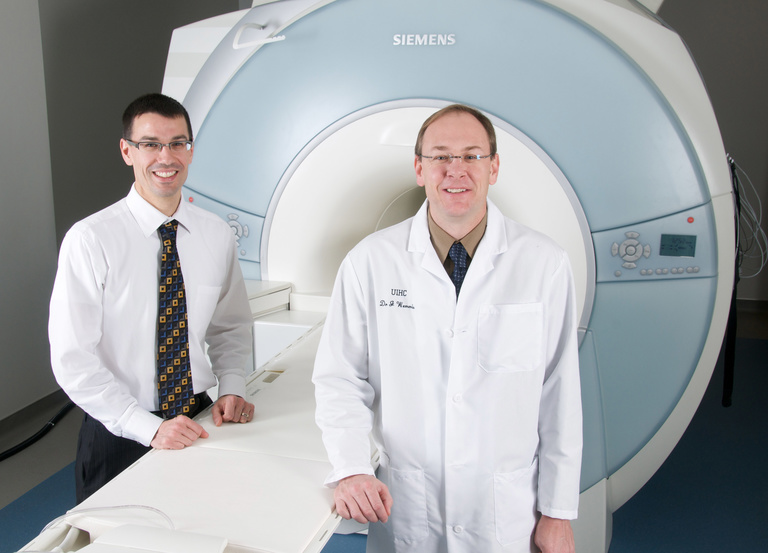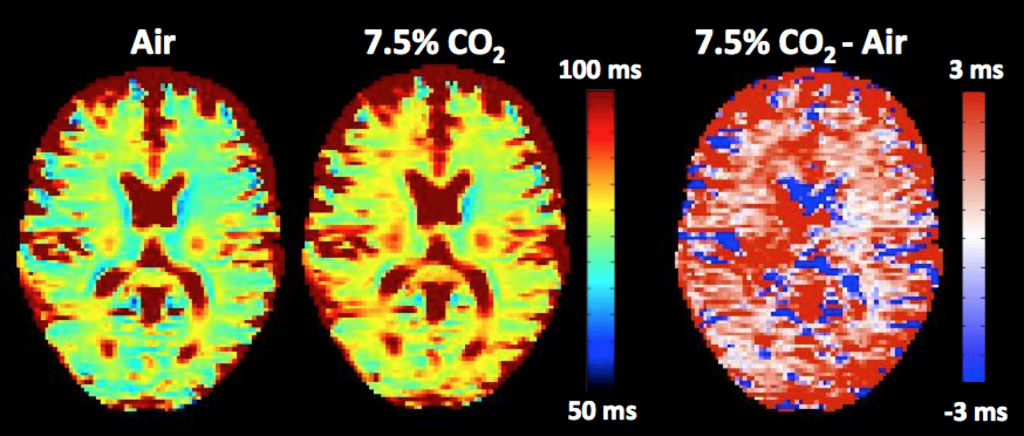University of Iowa neuroscientist John Wemmie is interested in the effect of acid in the brain (not that kind of acid!). His studies suggest that increased acidity—or low pH—in the brain is linked to panic disorders, anxiety, and depression. But his work also indicates that changes in acidity are important for normal brain activity too.
"We are interested in the idea that pH might be changing in the functional brain because we've been hot on the trail of receptors that are activated by low pH," says Wemmie, associate professor of psychiatry in the UI Carver College of Medicine. "The presence of these receptors implies the possibility that low pH might be playing a signaling role in normal brain function."
Wemmie's studies have shown that these acid-sensing proteins are required for normal fear responses and for learning and memory in mice. However, while you can buy a kit to measure the acidity of your garden soil, there currently is no easy way to measure pH changes in the brain.

Wemmie teamed up with Vincent Magnotta, UI associate professor of radiology, psychiatry, and biomedical engineering. Using Magnotta's expertise in developing MRI (magnetic resonance imaging)-based brain imaging techniques, the researchers developed and tested a new, noninvasive method to detect and monitor pH changes in living brains.
MRI detects pH changes
According to Wemmie, the new imaging technique provides the best evidence so far that pH changes do occur with normal function in the intact human brain. The findings were published May 7 in the Proceedings of the National Academy of Sciences (PNAS) Early Edition.
Specifically, the study showed the MRI-based method was able to detect global changes in brain pH in mice. Breathing carbon dioxide, which lowers pH and makes the brain more acidic, increased the signal, while bicarbonate injections, which increases brain pH, decreased the MRI signal. The relationship between the signal and the pH was linear over the range tested.

Importantly, the method also seems able to detect localized brain activity. When human volunteers viewed a flashing checkerboard—a classic experiment that activates a particular brain region involved in vision—the MRI method detected a drop in pH in that region. The team also confirmed the pH drop using other methods.
"Our study tells us, first, we have a technique that we believe can measure pH changes in the brain, and second, this MRI-based technique suggests that pH changes do occur with brain function," Magnotta says.
"The results support our original idea that brain activity can change local pH in human brains during normal activity, meaning that pH change in conjunction with the pH-sensitive receptors could be part of a signaling system that affects brain activity and cognitive function," Wemmie adds.
A new way to view brain activity
Importantly, this technique may also provide a new way to image the brain.
Currently, functional MRI (fMRI) measures brain activity by detecting a signal that's due to oxygen levels in the blood flowing to active brain regions. The UI team showed that their method responds to pH changes but is not influenced by changes in blood oxygenation. Conversely, fMRI does not respond to changes in pH.
"What we show is our method of detecting brain activity probably depends on pH changes and, more than that, it is distinct from the signal that fMRI measures," says Wemmie. "This gives us another tool to study brain activity."
pH and brain function
Wemmie's previous studies have suggested a role for pH changes in certain psychiatric diseases, including anxiety and depression. With the new method, he and his colleagues hope to explore how pH is involved in these conditions.
"Brain activity is likely different in people with brain disorders such as bipolar or depression, and that might be reflected in this measure," Wemmie says. "And perhaps most important, at the end of the day: Could this signal be abnormal or perturbed in human psychiatric disease? And if so, might it be a target for manipulation and treatment?"
In addition to Wemmie and Magnotta, the UI team included Hye-Young Heo, Brian Dlouhy, Nader Dahdaleh, Robin Follmer, Daniel Thedens, and Michael Welsh.
The work was supported by the McKnight Endowment Fund for Neuroscience, the Dana Foundation, and a UI Clinical and Translational Science Award.